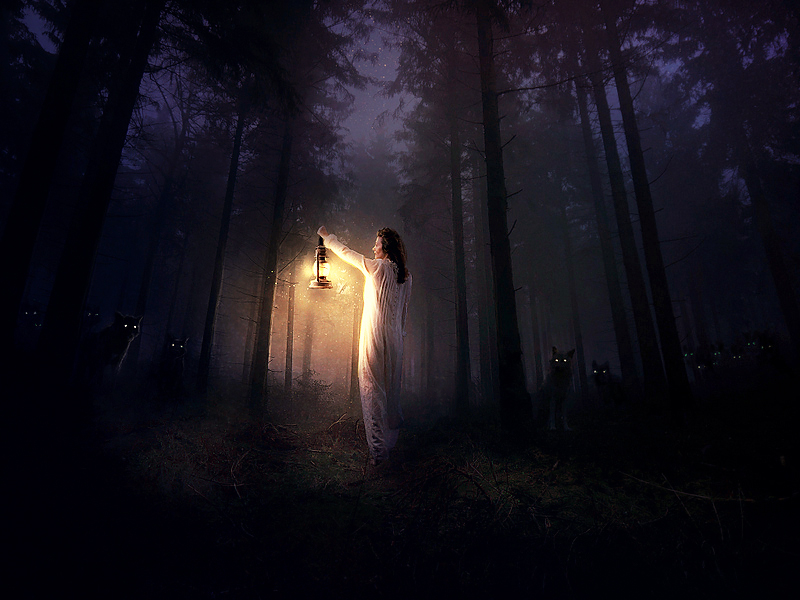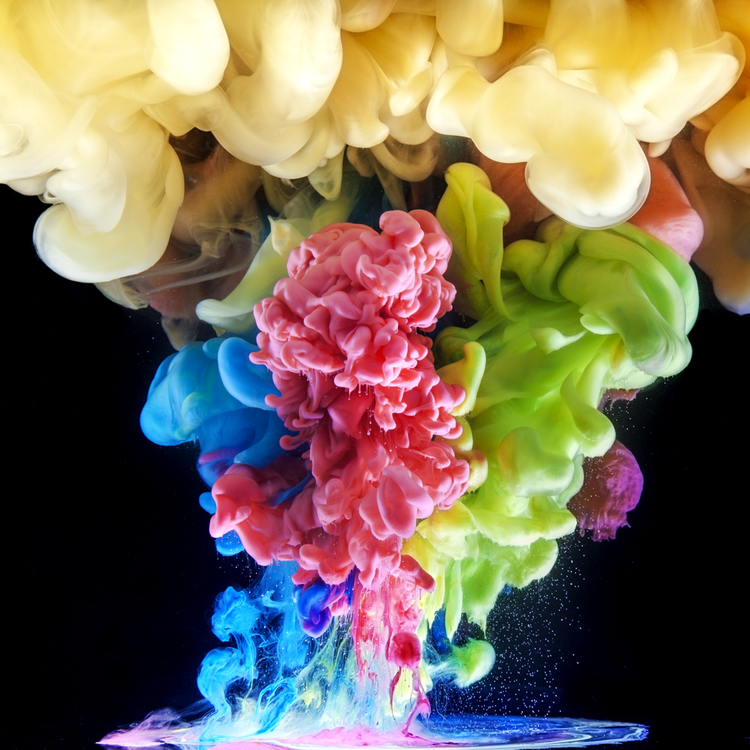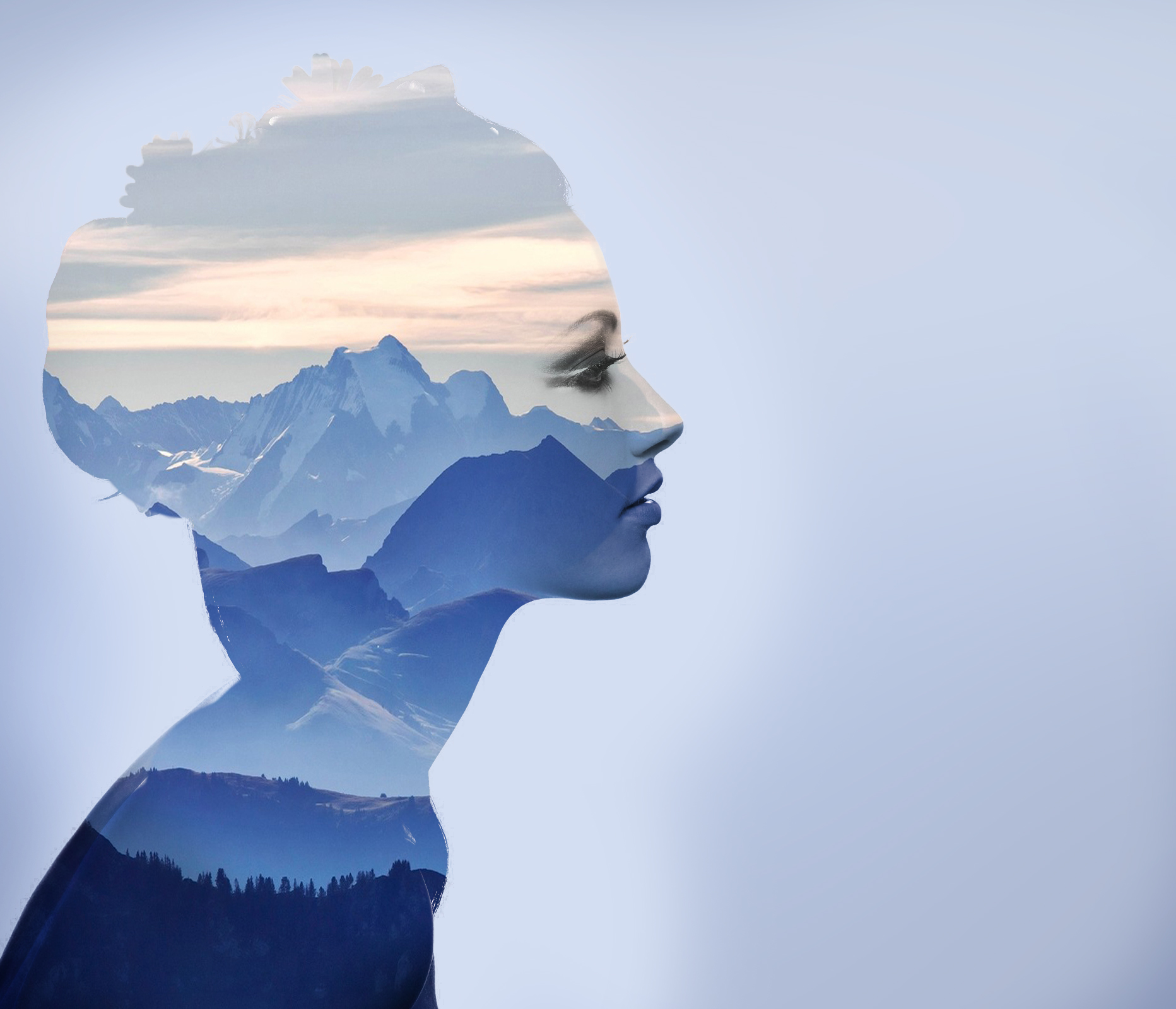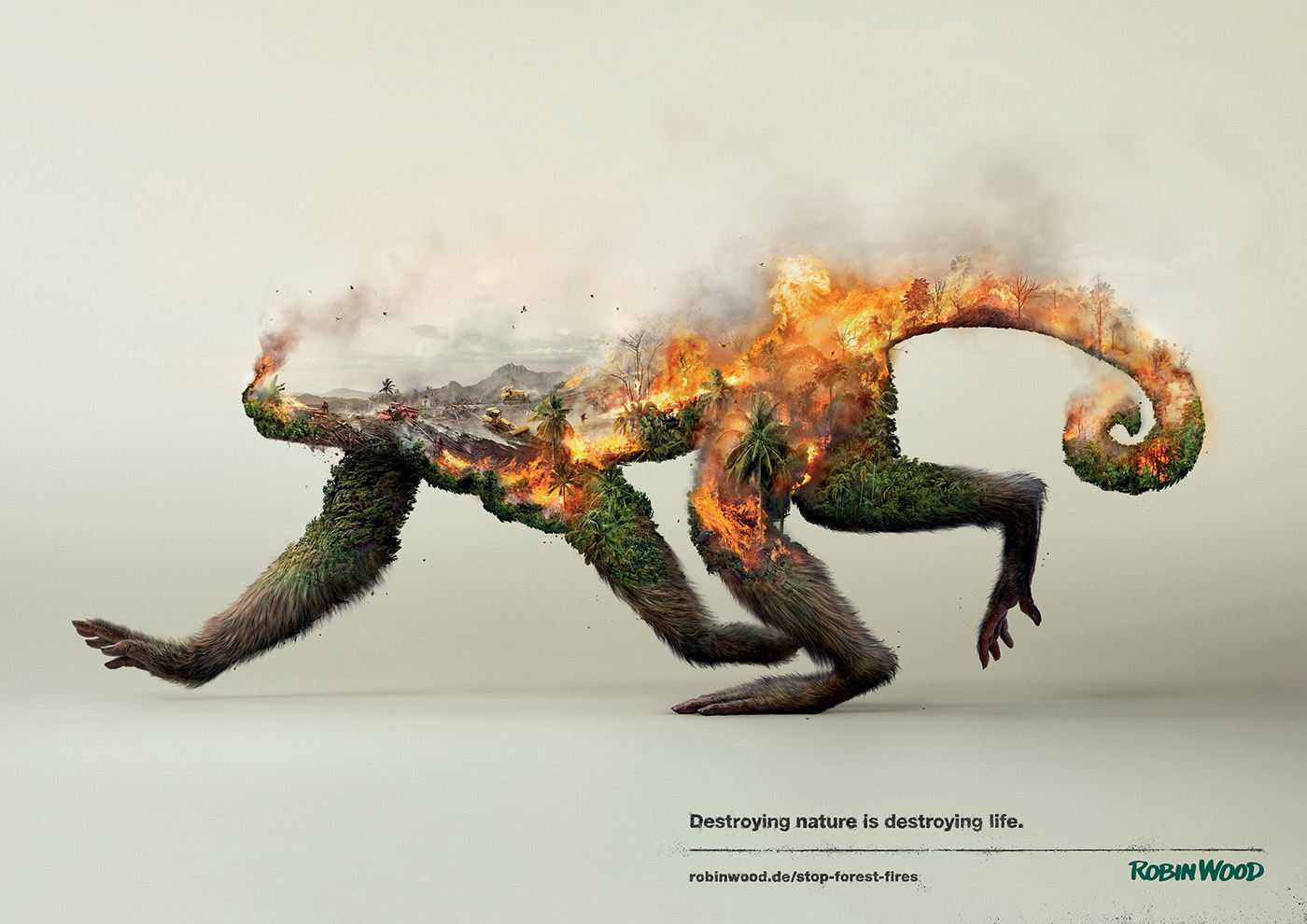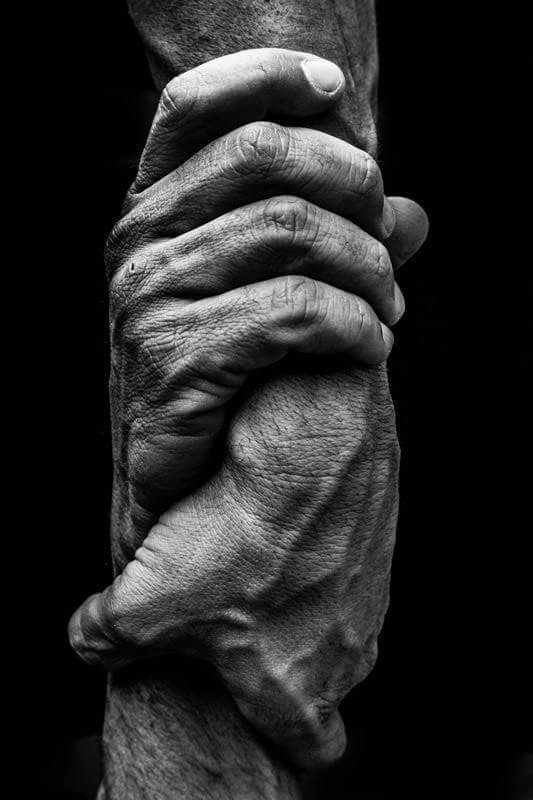HOMEWORLD: From Inner Space to the Stars
August 25, 2022 § 2 Comments

Readers of PARALLAX know me as a writer interested in mystical, philosophical subjects. But I’m also a singer, songwriter, musician and performance artist. I’ve been brewing a conceptual electronic music project over the past several years, exploring the same themes I cover in PARALLAX from an artistic angle. Now, the craft has landed.
Introducing Flight Call, my embodied persona from the stars…a creation from another dimension.
As of 8.22.22, HOMEWORLD, my debut album as Flight Call, is streaming everywhere. Explore this 10 song meditative avant pop journey from inner space to the stars. You’ll find many of our favorite themes from PARALLAX, including cosmic consciousness, interconnectivity, liberation from social programming and personal metamorphosis. Flight Call is a love letter from my soul to the dreamers of the world.

Flight Call is the archetypal cosmic traveler from another world. She is on a mission. Dip into HOMEWORLD at www.iamflightcall.com.

“When I first fell to Earth, the atmospheric pressures knocked out my connection to Homeworld signal. Inside my heart portal, the line went dead. I could no longer hear the universal music. The body’s heartbeat pounded in my ears, too real, the inner vortex inaccessible. I could feel that part of me was missing, but I didn’t understand what was happening…” – Flight Call
Anchoring Essence: Touchstones of Truth
April 22, 2021 § 7 Comments
“I contain multitudes.” ~ Walt Whitman
“In your soul are infinitely precious things that can not be taken from you.”~ Oscar Wild
“We have to get back into the inner jeweled realm and make ourselves at home there.” ~ Terence McKenna
“The soul is your temple.” ~ Chanakya
During times when fear and uncertainty run high, as now, it is essential to be grounded and connected to our own energy, or we will go as crazy as the world.
Nobody teaches us in school how to connect with the wisdom of our soul. The idea of a soul at all is often viewed as an antiquated or purely religious concept. This erasure leaves us viewing ourselves as a blank slate mind to be filled with memorized facts. We may be informed about the world, but we are set up to miss out on our greatest resource of all: inner wisdom, essence vision.
Words are placeholders for realities far more complex than the limited signifiers used to represent them. Whether or not you subscribe to the idea of a soul or spirit that exists beyond the body, we are unarguably a point of specific consciousness containing a unique collection of experiences, feelings, talents, perspectives and affinities.
Our point of view is a feeling signature unlike any other person’s—an imprint of presence that is our deepest self beyond the personality, beyond fears and projections. A core truth of self.
This core essence knows more than our conscious minds. It is tapped into the wealth of subconscious creative connections, as well as innumerable possibilities within the imaginal planes of collective consciousness and universal inspiration. We construct our personality as a form of self-protection to interface with the world. (See, “Authenticity & The False Self.”) But deep-diving beyond this construct yields a wealth of inner richness.

Essence is innate. The constructed egoic personality often throttles the pure expressions and impulses of this essential nature, trying to play by the rules, gain approval and “get it right” by applying logic. But there is a deeper guidance system of resonance available to us, one which is infinitely expansive. Transcendent, even.
We are not told about this inner wealth, or taught to access it.
Yet anchoring our essence—and accessing its wisdom—has never been more important, both individually and collectively. Traumatic experiences and distressing, stressful circumstances—like a global pandemic, a rapidly changing environment and massive civil unrest, for instance—create dissociation. We might be partially present, going through the motions, but we are half dislodged and not fully embodied.
This deeply uncomfortable, sometimes excruciating, experience—seen as soul loss by indigenous and neo pagan traditions—manifests as anxiety, depression, brain fog, feelings of dread, listlessness and disconnection.
I’d like to share with you a time-tested personal practice I use to connect to my own essence. Using this exercise as a morning practice has been my lifeline through the past year of lockdown. I’ve shared this exercise with several friends who tried it and gave glowing reports of better days and increased well-being.
Try it as a three day challenge and let us know how it goes!
I’ve found it to be a game-changing tone setter for the day, giving a significant elevation of mood every time. Obviously some days more than others, but I’m always glad I did it.
As one friend put it: “Instead of waiting to see the day through someone else’s filter, you get to YOU deeply.”
Essence Meditation
&
Soul Dictation
Needed: a notebook & pen within reach. A way to listen to music & a timer.
1.Set the timer for 5-10 minutes. Close your eyes while sitting or lying down somewhere comfortable.
2. Listen to calming, uplifting music—I find ambient or instrumental is best to free the mind & support elevation. (Youtube & Spotify have a vast array of healing/meditation music & soundscape options.)
3. Direct your focus inward, resting your awareness in the space surrounding your heart. Placing your palm over the heart center can help stimulate sensation of presence within this area. Feel your chest rise and fall with your breathing. Relax into your inner being. Soften and sink inward.

4. Feel into your own essence. By which I mean: internally, on a feeling level, using your attention like a spotlight scanning inwardly, do your best to locate the purest center of your “you-ness” at its most innocent and pure. Then feel into it, lean into it, feed it with your attention. Deep-dive your interior like a vast ocean. And while you are swimming there ask yourself:
What does my essence feel like? If I was a color pallet, what colors feel most like me? Most like home? Does being underwater feel soothing? Feel into that.
Follow what feels “warmer, warmer, warmer…” like that game we used to play as kids. Move towards what feels good. Allow yourself to dissolve slowly and pleasurably into the core of your own inner space, like trust falling into your own arms. This, in here, is your safe place. Your regeneration chamber. Your temple. A home base just for you. A source of infinite nourishment to drink from.
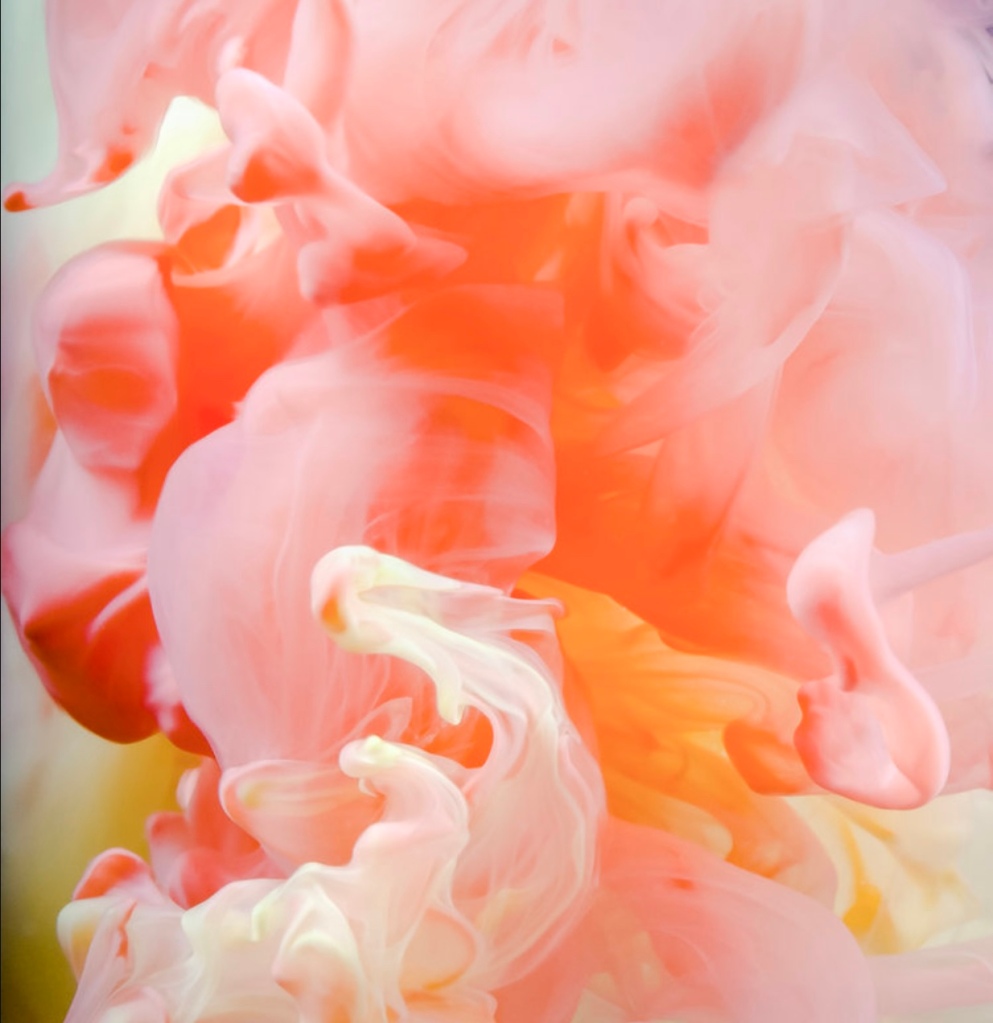
Be playful. Be gentle. Have fun.
As one friend said of the exercise, “I found it very playful. An invitation to really savor the joy that I often shove down.”
What images, colors, places, activities or symbols conjure a deep, abiding sense of home and truth for you?
Does the sound of the wind in the trees give you an extra lift of excitement, reminding you of running free as a child, when you could still hear the secrets whispered between leaves? Feel into that energy.
Perhaps you have a favorite memory that conjures a feeling of home for you. Color combinations that give you a little spark of joy.

Does the way sunlight looks on water make you feel a special charge? Expand that sparkly visual in your mind’s eye—dive deep into the feeling of that liquid light.
Maybe you can access the feeling without needing to conjure images or words. Sink into that cozy sensation that feels like home.
With loving awareness, nurture the feeling the touchstone inspires inside you. Allow yourself to drift pleasurably inside the feeling.
What brings you alive? The answers will be the same things that bring you home to yourself.
What we love is part of who we are.
What are your touchstones of personal essence? This meditation will help you discover them, at which point they become a vital resource—instant access to anchored essence which increases well-being, flow state, confidence, clear thinking and creative connections.
Images and symbols, like words, are portals to the energies they represent. Make notes in your notebook when you find a touchstone that elevates your feeling state.
Once you have discovered your inner touchstones of essence, you can use them as a shortcut to access the feeling-state they inspire.
Remember, this isn’t shadow work. We aren’t going down the dark interior rabbit holes here. This is an exercise for nourishment, uplift and re-connection with the truest parts of being.
You are consciously creating a bubble of heavenly frequencies within and around yourself. Watering your inner garden, showing your truest, deepest, purest, most innocent and powerful self interest and love. Focus on joyful, uplifting sensations.
(This is not to advocate for spiritual bypassing. Facing fears, uncomfortable truths and healing inner wounds is an important part of coming home to yourself. For more on shadow work, “Navigating The Dark Night of the Soul,” and to work with wounded inner aspects, see “Soul-Retrieval.” That being said, in these dark times I truly think we need the fortification of going straight to the spirit for nourishment, vision, uplift, empowerment and regeneration.)
Essence Meditation is about elevating your inner atmosphere to connect with your most exalted aspects. Your multidimensional self.
5. Anchor essence. Once you’ve located the “warmer, warmer” feeling enough to evoke it, even slightly, at will—once you have fed your experience of your essence with your attention, grow it. Expand the sensation outward from your inner being to fill your body. Then keep expanding it to surround and encompass you like a loving atmosphere.
If you saw colors, visualize them around you. If you saw stars, surround yourself with starlight. Expand your inner world to form a protective energetic cocoon of your own essence around you. This is also a good strategy for creating energetic boundaries.

6. Soul Dictation.
When your timer goes off, open your notebook, raise your pen and ask your soul, your essence—this inner magical mystery you’ve just spent the last five or ten minutes communing with—“What do you have to tell me?”
Write down whatever comes. Even if it seems simple or obvious. Silly, cheesy, gibberish. Disjointed. Doesn’t matter. Withhold judgement. Allow yourself to be vulnerable with yourself. This is a process of getting comfortable with allowing a vaster, more intuitive, multidimensional aspect of self to speak—and be heard.
Just free-associate and write down whatever you hear internally as you listen for that true voice, whatever comes up. If you want, ask a question. Words, impressions, downloads will start to come. And the messages might surprise you.
Sometimes they feel very ordinary or generic while you’re scribing, but then you’ll read them later and they’ll suddenly light up. Profound truths are often simple. In the moment, it may seem like nothing. But later, it might be exactly what you need to hear. Just play, trust, explore. Sometimes I purposely let myself write messily so I can trick myself into thinking less and listening more. The idea is to get out of the way so you can hear the still, small voice.
As one friend who tried this exercise to great success related: “It’s a doorway to your own sacred heart.”
Going within for answers is a radical act in a society that conditions us to look for the truth from authority figures outside ourselves.
Ask your essence questions you don’t know the answer to…and watch an answer come.
*Please share your experiences in the comments if you try this exercise. I’d love to hear any thoughts you care to share, regardless. I love it when the comments becomes a shared pooling of notes.
Transmutation Tool
February 12, 2020 § 27 Comments
In a culture created to make us want more of what we don’t have, gratitude for what we have is a radical act.
When my dear friend asked me to join a 28 day gratitude challenge that was changing her life, I decided to try it.
I had resistance. “Gratitude, rhymes with platitude” chimed my inner cynic. I associated the word gratitude with sunset beach photos on Instagram and the caption #grateful—to which the inner cynic would think, “Yeah, I’d be grateful, too. If I were there.” I told myself I was doing it for solidarity.
Plus, I trusted my friend, and I had nothing but my mid-winter depression to lose. So I gave it a shot.
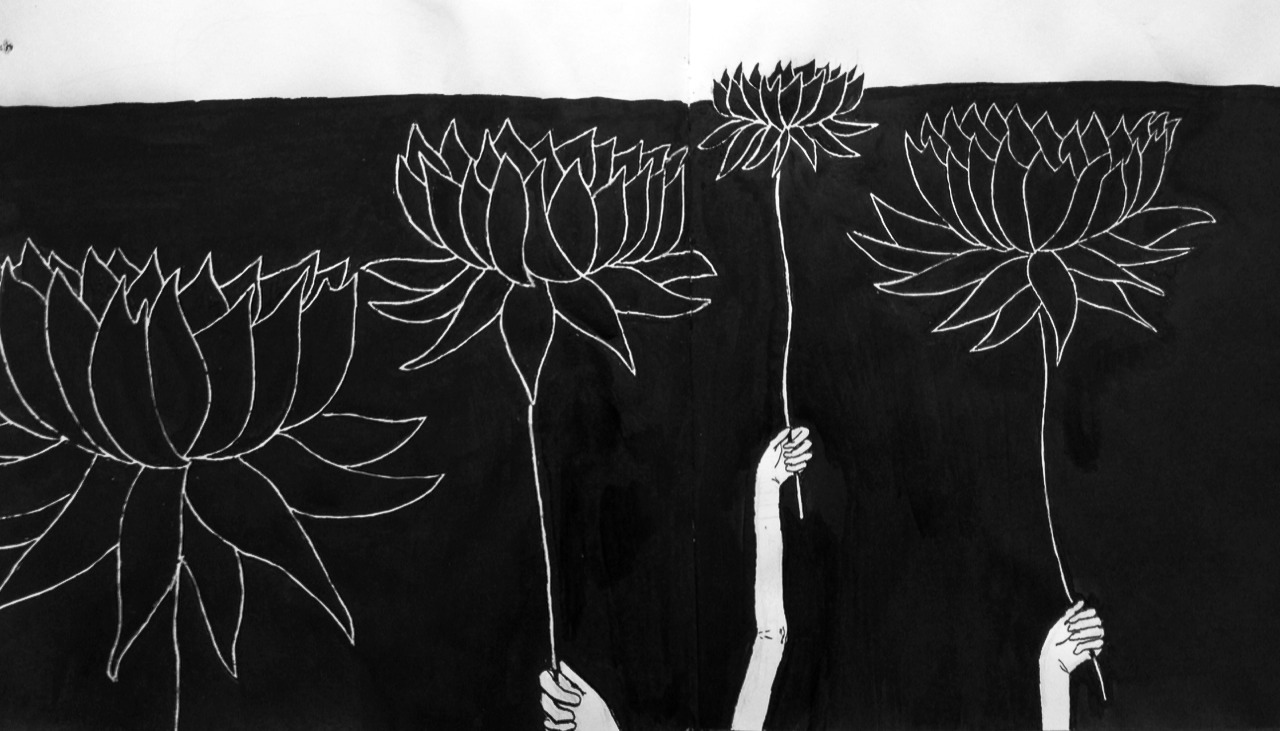 [Artist unknown]
[Artist unknown]
The daily practices were part of a book by Rhonda Byrnne, called “The Magic.” I started with a free PDF and ended up loving the author’s guidance and prompts so much I bought the book.
I began my first gratitude list in a groggy morning fog —I am one of those “not a morning person” people. I finished feeling downright upbeat. The shift was remarkable. I felt alive again, present, awake; the film burned from my eyes.
The next day I approached the practice with more interest. Again, the perspective shift was uncanny.
The third day, I actually woke up excited to make my list because of the fix of positive feelings it generated. My friend had described this phenomenon as happening to her, and I remember thinking ‘how sweet, but that would never happen for me.’ Uncanny!
By the fourth or fifth day I found myself transforming. I noticed every little joy around me. The fact that each chapter in the book highlights different areas of focus for one’s gratitude added support and inspiration.
How could I have taken so much for granted? The food in my fridge. The clean water at my disposal. The fact that I live during a time when the entire archive of the world’s collected knowledge exists at our literal fingertips. The roof over my head. The peaceful existence and beauty of trees. The use of my legs. The feeling of my cat’s fur and the sound of her purr. The fact that I have eyes, hands, taste; the gift of sentience, of consciousness, of having a body—the opportunity of a day, the gift of my life.
I felt moved to tears. Humbled and awash with reignited appreciation for the world around me.
Intentional gratitude interrupts the trance state of complacency we fall into when we see the same things every day, rebooting our perception to see the world through fresh eyes.
I think no matter what or how little we have, focusing on what we do have breeds empowerment, uplift, joy—is medicine.
The 28 consecutive days of various gratitude practices presented in “The Magic” banished my months-long depression and forever changed my perspective. I’m not saying depression is as simple as a negative outlook, but state of mind does effect mood, and having a gratitude practice is a powerful tool to help manage depression.
I can’t recommend a daily gratitude practice enough. If you want to jump-start your joy try the 28 day challenge.
If the inner landscape can be likened to a wild and sometimes dark wood, then gratitude is my sacred fire—it warms me, lights my way and keeps back the predators.
I want to hear from you! What are your thoughts and experiences on this subject? Comments will automatically be entered into a raffle held on the last day of February 2020. The winner will receive a gifted copy of the book, “The Magic.”
The Secret Life of Trees & The Science Behind Forest Bathing
September 29, 2018 § 14 Comments
“A force hums in the heart of wood…the tree is saying things, in words before words.”
~ Richard Powers, “The Overstory”
“Trees are sanctuaries. Whoever knows how to speak to them, whoever knows how to listen to them, can learn the truth.”
“The clearest way into the Universe is through a forest wilderness.”
~
Recent studies confirm what poets & dreamers have always known in their hearts: the trees are talking to each other.
A revolution has been taking place in the scientific understanding of our arboreal friends. Biologists, ecologists & foresters are observing that trees have a quantifiable communication system and intelligence. We are learning that the forest is a community that cares for its own. Trees are social beings who work together for the survival of the whole.
There is a growing body of evidence, pioneered by forest ecology professor Suzanne Simard, which shows that trees communicate through interconnected root systems, in collaboration with fungal networks. This symbiosis forms what is known as “the wood wide web.”
This unifying network is composed of mycorrhizal fungi, of which there are many different species. The fungi send out gossamer-fine threads through the soil and weave into the tips of plant roots, bonding at a cellular level and creating a super-organism.

This collaboration of roots creates an information superhighway, functioning like an underground organic internet. The wood wide web connects whole forests, enabling trees, not only to communicate with one another, but also to share resources.
For example, a tree which receives an excess of sunlight will transmit the resulting nutrients via the wood wide web to a tree that receives only shade. Healthy trees have been known to nurse felled friends, keeping stumps alive for as long as centuries. Parent trees nourish their saplings via the wood wide web, and will even reduce their own root growth to make room for their offspring.
Forest dwelling networks of trees warn one another of danger–-drought, predators, or disease, for instance. They do this by sending electrical signals through their root systems, simultaneously releasing molecules into the air; chemicals which act as messengers. Information can be transmitted in as little as seconds, or take as long as days.
Responding trees then alter their behavior, releasing chemical defenses to ward off predators or conserving water in the case of a drought warning. Trees will even alter their chemical composition in response to warning signals sent by friends under attack, making their leaves taste more bitter to an influx of a certain predator. In short, they work together to survive and thrive.
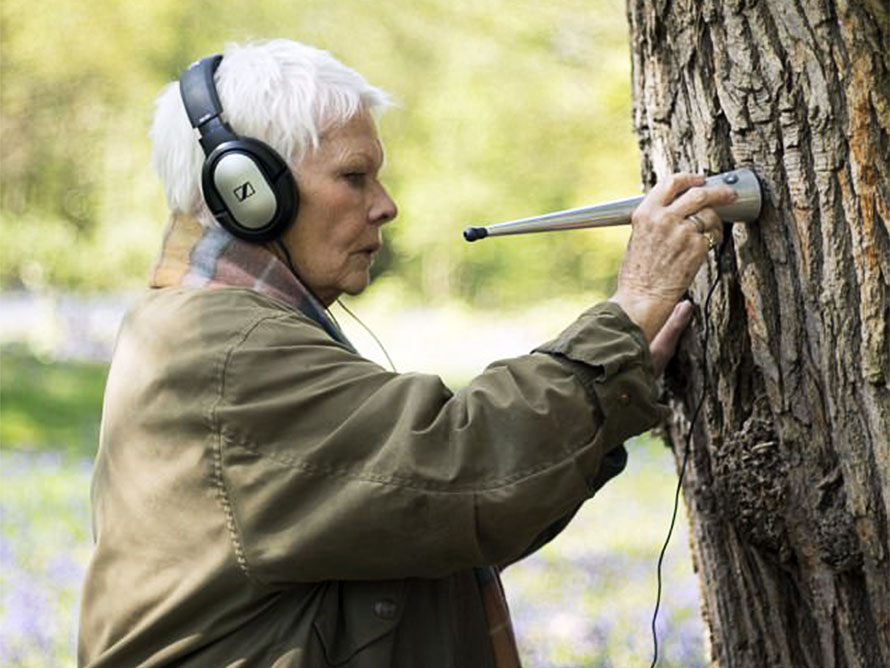 [Actress Dame Judy Dench in her recent BBC documentary “My Passion For Trees.”]
[Actress Dame Judy Dench in her recent BBC documentary “My Passion For Trees.”]
How might our own communities improve if we took our inspiration from the forest? What does this new understanding of trees have to teach us? Nature is wise. She knows that in giving, one receives, and that the benefit of one improves the whole.
“A tree can be only as strong as the forest that surrounds it,” notes “The Hidden Life of Trees: What They Feel, How They Communicate – Discoveries from a Secret World.”

As Biology professor, George David Haskell notes: “Dogmas of separation fragment the community of life; they wall humans in a lonely room. We must ask the question: ‘can we find an ethic of full earthly belonging?’” (“The Songs of Trees.”)
Theoretical physicist David Bohm notes that the process of dividing the world into parts is a convenient way of thinking when applied to practical matters. But then we become fooled by our own fragmented perception.
“Man thus obtains an apparent proof of the correctness of his fragmentary self-world view, though, of course, he overlooks the fact that it is he himself, acting according to his mode of thought, who has brought about the fragmentation that now seems to have an autonomous existence, independent of his will and of his desire.” (“Wholeness & Implicit Order.)
 [Portrait of Picasso by Juan Gris]
[Portrait of Picasso by Juan Gris]
What better way to reconnect with our environment than a walk in the woods?
The Japanese have a word, shinrin-yoku, which translates to “forest bathing,” and means “taking in the forest atmosphere.”
Developed in Japan during the 1980s, shinrin-yoku has become a cornerstone of preventative healthcare & healing in Japanese medicine.
Scientific experiments conducted in Japan reveal a host of health improvements that result from a simple 40 minute stroll in the woods:
- Boosted immune system functioning, with an increase in the count of the body’s Natural Killer (NK) cells.
- Reduced blood pressure
- Reduced stress
- Improved mood
- Increased ability to focus, even in children with ADHD
- Accelerated recovery from surgery or illness
- Increased energy level
- Improved sleep
Studies show that people who just looked at a forest view for 20 minutes had a 13% lower concentration of the stress hormone cortisol. (“The Healing Power of Trees.”)
Many trees give off organic compounds that support our “NK” (natural killer) cells, which are part of our immune system’s way of fighting cancer. (“The Science of Forest Therapy.”)
Trees have occupied a sacred place in human mythology for all of time. The Tree of Life appears in all of the world’s major religions, while The World Tree appears in a host of Indo-European & Native American cultures.
With its roots in the underworld, it’s trunk in our dimension, and its branches reaching up into the heavens, the World Tree is seen as being the axis that holds the cosmos together.
And trees indeed make our world possible.

I’ll leave you with a bit of tree wisdom from zen master Thich Nhat Hahh:
“I asked the leaf whether it was scared because it was autumn and the other leaves were falling. The leaf told me, ‘No. During the whole spring and summer I was very alive. I worked hard and helped nourish the tree, and much of me is in the tree.
“Please do not say that I am just this form, because the form of leaf is only a tiny part of me. I am the whole tree. I know that I am already inside the tree, and when I go back to the soil, I will continue to nourish the tree. That’s why I do not worry. As I leave this branch and float to the ground, I will wave to the tree and tell her, ‘I will see you again very soon.’”
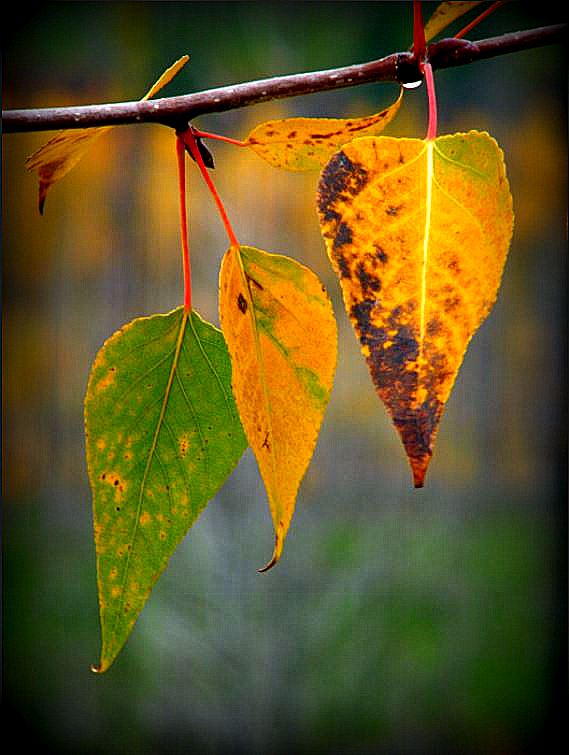
Breaking The Movement Taboo: Reclaiming The Body’s Power Through Dance
August 6, 2017 § 4 Comments
There is a vitality, a life force, an energy, a quickening that is translated through you into action, and because there is only one of you in all of time, this expression is unique.
Several years ago, I attended an art opening. During the event, I noticed a woman in the crowd start to move in a way that caused her to stand out. Dressed in flowy black clothing, she slowly, with great poise, began to extend her arms, moving her fingers as though sculpting the air. Eyes slightly downcast, unfocused and internal.
People stopped looking at the art and began looking at the woman. What was happening? Was she drunk? Having a slow-motion meltdown? The air in the room became tense and thick.
Like underwater kelp, she allowed her body to gently sway back and forth, stepping forward to move ever-so-slowly across the room, all the while tenderly crafting the space around her with fluid fingertips. Her pace and reverence were reminiscent of Tai Chi, but more evocative. Each movement was graceful, flowing into the next.
And then . . . we understood.
She was a dancer, and part of her performance was to take us by surprise. One moment she was one of us, standing around, looking at the paintings on the walls—conforming to the confines of accepted physicality (sitting, standing, walking). The next, she was breaking the movement taboo. Neither sitting, standing, nor walking, but expressing, emoting through her body.
The movements themselves were simple enough, but they were affecting. They came from a deep, committed place within the dancer.
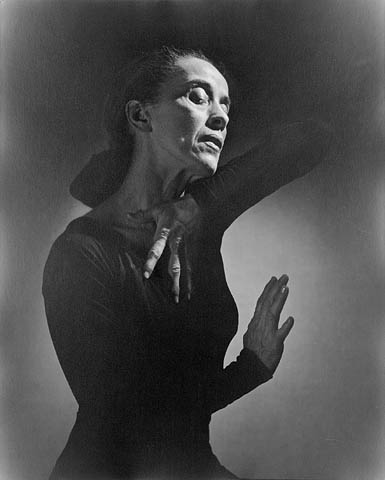 [Martha Graham by Yousuf Karsh, 1948]
[Martha Graham by Yousuf Karsh, 1948]
I was struck, not only by the performance itself, but also by that string of moments when people were taken aback by the simple act of a woman moving authentically. You could see in their faces that until they could categorize what was happening, they mistrusted it. Until she was officially “a dancer” in their minds, she was potentially a loose cannon for daring to step outside the confines of acceptable movement.
As we watched her perform, I noticed how sharply her physical fluidity and emotiveness contrasted our own uniform rigidity. It was then that I realized there exists an invisible tyranny over movement. An unspoken, shame-based restriction so pervasive, we don’t often think to question or challenge it.
 [“Birthing The New God,” By Paul Bond]
[“Birthing The New God,” By Paul Bond]
Dance has been an important part of human ritual, healing and celebration since before the birth of the earliest civilizations. Archeologists have discovered paintings in Indian and Egyptian tombs depicting dancing figures from as far back as 3300 B.C.
While in tribal scenarios we once danced together—and still do in some parts of the world and small pockets of society—as culture has evolved, a distinct division has occurred between professional dancers, who are in effect “socially sanctioned” to move expressively, and regular folk who make jokes about having “two left feet.”
Break dancing is one notable exception, in that self-taught dancers are celebrated. But even in this scenario, it’s the most exceptional, skilled and practiced performers that are given audience. There are still parameters. Technique is required. One couldn’t simply improvise and make up for a lack of skill with feeling.
Beyond perhaps shaking their hips at a dim, crowded club here and there, most people without a background in dance feel intimidated by the idea of engaging their body in expressive movement.
Most of us who are not professional dancers have at one time been shamed—or watched others be shamed—by peers when we step outside the box of acceptable movement. The shadow of social stigmatization looms large. We fear being a joke, Elaine, in the TV series Seinfeld, who famously loved to dance but moved with embarrassing seizure-like jerks, thumbs and knees akimbo, all the while thinking she was the life of the party.
This unspoken shame and fear surrounding expressive movement prevents most people from ever experiencing the immense therapeutic benefits of dance.
Swedish researchers have shown dance to improve mood and increase mental health. It builds cardiovascular, bone and muscle strength. According to the New England Journal of Medicine, dancing can decrease the onset of dementia, boosting immunity, memory and cognition. A Standford Study has found that movement to music creates new neural pathways by integrating several brain functions at once: kinesthetic, rational, musical and emotional.
The depth of skill required to perform any kind of classical or structured dance is undeniably impressive. But many people don’t realize there exists a genre of dance which specifically celebrates the authentic movement that springs from the untrained body.
Postmodern dance emerged in the late ’60s as a reaction against the compositional constraints of modern dance. In the same way, modern dance itself once rebelled against the rigid formalism of classical ballet. The Judson Dance Theater, a collection of Greenwich Village artists, dancers and composers, rejected formalism in favor of fostering the purity of ordinary movement.
They saw beauty and value in the freshness of instinctive human self-expression, often using untrained dancers in their performances. Postmodern dance is typified by natural movement—versus learned form.
Around the turn of the last century, people like Isadora Duncan had developed a style they called “free dance”—a rejection of classical formality, which paved the way for a deepened expression of natural movement. Drawing on inspiration from classical Greek arts, folk dances, nature and natural forms, Duncan “followed [her] fantasy and improvised, teaching any pretty thing that came into [her] head.” (Barefoot Dancer: The Story of Isadora Duncan.)
Several years after my experience at the art opening, I found myself stretching on a studio floor with a dancer-friend of mine. A modern dance teacher, she had been kind enough to give me a crash course in movement. As we warmed our bodies up and felt into the space around us, she told me all about postmodern dance and the virtues of authentic movement. Hearing from a trained, professional performer that my natural, untrained physical impulses had value was nothing short of mind blowing to me.

As she stretched her hamstrings, my friend explained that, just like any art, the main purpose of contemporary dance was to develop one’s “authentic voice.” As a writer, I recognized this phrase and understood it. Authentic voice highlights the value of personality and uniqueness in making effective art. It denotes the pleasure provided by idiosyncrasy, honesty and sincerity.
To cultivate authentic voice takes experimentation, risk and practice—it’s a meditation on the power of vulnerability. Applying this idea to dance was a game-changer for me. Ultimately, developing one’s true voice in dance is not about technique, it’s about having the confidence to go deep, and to be vulnerable, allowing authenticity to shine through.
 [Photo by Javier Vallhonrat]
[Photo by Javier Vallhonrat]
I started in my living room. I began to play with what my body wanted to do. My dancer-friend had mentioned Bartenieff Fundamentals, a method she had studied which begins with a focus on breath, and evolves into one of the body’s extremities taking the lead in expressing itself.
It could start with a hand, a shoulder, a toe, the spine…I learned that if I waited and listened, with music playing, some part of my body always volunteered for the job. And after that, another part inevitably followed.
The goal, my friend said, was simply to become comfortable with my own patterns of authentic movement. And then to eventually build and expand upon those patterns. Modern dance pioneer Martha Graham’s concept of Contraction & Release (a contracting movement with each in-breath, an expansive one with each outbreath) was also a helpful touchstone to begin.
In flamenco, there is a word called, duende, the spirit of the dance. Flamenco dancers wait to start moving until they feel the duende move them. They will wait, poised while the music plays, for as long as it takes.
My first time experiencing being moved by the duende of dance was life-changing. I felt a natural rhythm take hold of me, propelling me. I wasn’t thinking at all, which felt delicious. As a writer who spends most of my creative time in my head, it felt amazing to move my focus to the body, to learn this new visceral language and communicate beyond words. My body rejoiced in its newfound freedom, and it had a lot to say. Stored emotions surfaced, flowing through me, released. It felt good to move expressively. In fact, it felt essential. I wondered how I had ever lived without it.
I started my dance practice while snowed in during the month of January, while fighting an immense depression. Without exaggeration, dance lifted me out of an epic funk and into a new exciting space of possibility. I had broken through the movement taboo and it was deeply liberating. I dare anyone to throw themselves into dancing to the full length of a song they enjoy and not feel a marked sense of uplift by the end. It’s an endorphin rush, athleticism meets creative catharsis.
Dance is a vital resource of physical health and emotional wellbeing. You don’t need to take a class to do it. Dance is for everyone. With the exception of the completely paralyzed, someone in a wheelchair can move their upper body expressively to music—there are whole dance companies created by the differently abled.
Deep, expressive movement works as emotional therapy, a physical boost and a cardiovascular workout that you won’t even know you’re doing—until the song ends and you feel how fast your heart is pounding in your chest. Even a slow song, if you work on consistent pacing and fluidity, is a major core workout.
This is an invitation to shed the shame, break the taboo, and reclaim your body’s natural joy in movement. All it takes is 5 minutes, some space, some music, and your willingness to open up to what your body wants to say.
*For some inspiration, follow my journey as an untrained dancer exploring free/postmodern dance & movement on Instagram, @taiwoodville. Special thanks to Alissa Hattman for her notes on this piece, and for Michele Ainza (my dancer-friend) for freely sharing her wisdom, knowledge and inspiration.
Dreaming The Dark: Technologies of Immanence
March 10, 2017 § 3 Comments
 [“Visions” by Jefferson Muncy]
[“Visions” by Jefferson Muncy]
“Magic is the technology/psychology of immanence, of understanding that everything is connected.”
~ Starhawk, “Dreaming the Dark: Magic, Sex & Politics.”
Before advertising stole our souls and scientific materialism denied its existence, dogmatic religious institutions held our souls hostage. The result has been a continually morphing and adapting form of systematic soul erasure in the Western world.
Author & activist Starhawk calls this “removing content.” She notes that it allows for power relationships in which human beings are exploited, and for a worldview that results in the exploitation of nature, because the inherent value of being has been denied.
“I call this consciousness estrangement,” Starhawk details, “because its essence is that we do not see ourselves as part of the world. We are strangers to nature, to other human beings, to parts of ourselves. We see the world as made up of separate isolated nonliving parts that have no inherent value. Among things inherently separate and lifeless, the only power relationship possible is manipulation and domination.
“As we become separate, and are manipulated as objects, we lose our own sense of self worth, our belief in our own content, and acquiesce in our own exploitation.”(“Dreaming the Dark.”)
In this worldview emptied of spirit, a tree becomes merely timber to be measured in feet, given value only by its profitability; not its being, its beauty, or its part in the larger ecosystem.
Considering that Western society sees virtually nothing as sacred, it’s easy to see why we are poised on the brink of collective self-destruction.
And so an effectively soulless society is created, inhabited by shells who struggle to see their own value beyond doing & having. A sense of nonreality permeates our lives. As my dear poetry mentor, Barry Spacks, once phrased it: “Waiting to arrive, we’ve been here all along.”
“We live our lives feeling powerless & inauthentic—feeling that the real people are somewhere else, that the characters on the daytime soap operas or the conversations on late-night talk shows are more real than the people and conversations in our lives; believing that the movie stars, the celebrities, the rock stars, the People Magazine-people live out the real truth and drama of our times, while we exist as shadows, and our unique lives, our losses, our passions, which cannot be counted out or measured, which were not approved, or graded, or sold to us at a discount, are not the true value of this world.”
 [“Blessed Art Thou” by Kate Kretz]
[“Blessed Art Thou” by Kate Kretz]
Starhawk notes that estrangement permeates our society so strongly that to us it seems to be consciousness itself. Even the language for other possibilities has disappeared or been deliberately twisted.
“Yet another form of consciousness is possible. Indeed, it has existed from earliest times, underlies other cultures, and has survived even in the West in hidden streams,” Starhawk notes.
“This is the consciousness I call immanence—the awareness of the world and everything in it as alive, dynamic, interdependent, interacting and infused with moving energies: a living being, a weaving dance.”
“Magic is a word that makes people uncomfortable,” notes Starhawk, “so I use it deliberately, because the words we are comfortable with, the words that sound acceptable, rational, scientific, and intellectually sound, are comfortable precisely because they are the language of estrangement.”
She details that magic can be very prosaic—a leaflet, a lawsuit. Anything that changes consciousness at will. It can also be esoteric—inner work, interacting with the cosmos at large. At its heart, magic is moving energies.
“Ironically, as estranged science and technology advance, they have begun to bring us back to a consciousness of immanence. Modern physics no longer speaks of separate, discrete atoms of dead matter, but of waves of energy, probabilities, patterns that change as they are observed; it recognizes what shamans & witches have always known: that matter & energy are not separate forces, but different forms of the same thing.”
Starhawk defines: “To say something is sacred is to say that we respect, cherish and value it for its own being.”
In a world stripped of sacredness, it is a revolutionary act to see the innate beauty and value in being—one’s own and others’—to cherish & respect, to view life with reverence. When we remove the veil of Western materialism, the world comes alive again; and anything is possible.
This paradigm shift—from viewing reality as composed of separate, isolated, nonliving parts; from seeking power-over-–must be replaced by a worldview that acknowledges the living ecosystem of our dynamic inter-connectivity, to seeking power from within.
It’s no exaggeration to say that the survival of our species depends on it. And change starts within. Like seeds, we dream in the dark earth, but inside us we hold a blueprint for blooming.
So let us feel into our own aliveness today, let us expand our attention to include our own being; let’s look for it in others, in animals and plants. The world is shot through with immanence… for those who care to see.
 [Gregory Colbert, “Ashes & Snow” series.]
[Gregory Colbert, “Ashes & Snow” series.]
If you liked this post, check out:
“Beyond Division: Studies in Bliss”
“Unveiling The Mystery of The Higher Self”
Carl Marx described man as being estranged from his Gattungswesen (“species-essence”).
Giving Your Future Self Gifts
January 2, 2017 § 6 Comments
 [“Twin Heart” by Christian Schloe]
[“Twin Heart” by Christian Schloe]
“Caring for myself is not self-indulgence, it is self-preservation, and that is an act of political warfare.” ~Audre Lorde
A great many New Year’s resolutions revolve around exercising self-discipline, which may in the moment yield less pleasure, but will create a better outcome in the future.
Yet, 25% of New Year’s Resolutions are broken within the first week, and research at the University of Scranton suggests that only 8 % of people achieve their annual vows of self-improvement.
Recent research reveals that the part of the brain responsible for self-control is the same area that allows us to feel empathy.
 [“Mirror LLL” by Tigran Tsitoghdzyan]
[“Mirror LLL” by Tigran Tsitoghdzyan]
The human brain perceives the future self as if it were a stranger.
Tests reveal that when we think about ourselves in the present, parts of our prefrontal cortex light up that remain dim when we think about a stranger—or try to imagine our future self.
“Empathy depends on your ability to overcome your own perspective, appreciate someone else’s point of view, and step into their shoes,” remarks science writer Ed Yong.
“Self-control is essentially the same skill, except that those other shoes belong to your future self—a removed and hypothetical entity who might as well be a different person.” (“Self-Control Is Just Empathy For Your Future Self.”)
The English word empathy finds its root in the Ancient Greek “pathos,” which means “passion” or “suffering.”
In the early 20th century, German philosopher, Robert Vischer, adapted the word to create the German term Einfühlung—literally “feeling into”—which was then translated into English as empathy, defined as “the capacity to understand or feel what another person is experiencing from within the other being’s frame of reference.”
 [From Gregory Colbert “Ashes & Snow” exhibition.]
[From Gregory Colbert “Ashes & Snow” exhibition.]
Research has uncovered the existence of “mirror neurons,” which react to emotions expressed by others and then reproduce them.
This is why we get caught up in the emotion of art & performance, as well as the reason we feel a twinge of discomfort when we witness someone else experiencing pain.
Some people—a case notably examined on the podcast “Invisibilia”-–have an overactive level of empathy, known as mirror-touch synesthesia, wherein they experience a debilitating level of physical empathy for any reaction witnessed in others.
“The capacity for empathy seems to be innate,”relates Jane E. Brodey, “and is evident even in other species — the adult elephant that tried to rescue a baby rhino stuck in the mud despite being charged by its mother, as recounted in “When Elephants Weep.”(“Empathy is Natural, But Nurturing it Helps.”)
Empathy is a skill that can be learned & developed. The more we practice imagining what it feels like to be in another person’s circumstance, the better we become at doing it—and at giving our future self gifts, not grief.
“Think of [it] as a kind of temporal selflessness,” notes Ed Yong. “It’s Present You taking a hit to help out Future You.”
But for all the buzz empathy is getting these days, it’s possible that its sister state, compassion, is the more constructive practice to cultivate.
Buddhist Monk & French writer, Matthieu Ricard-–known as “world’s happiest man”—reflects that while empathy can lead to emotional burnout, the mood of compassion for another being is nourishing, energizing & empowering.
 [“The World’s Happiest Man Wishes You Wouldn’t Call Him That.’]
[“The World’s Happiest Man Wishes You Wouldn’t Call Him That.’]
The French monk details:
“The cerebral networks activated by meditation on compassion were very different from those linked to empathy. In the previous studies, people who were not trained in meditation observed a person who was seated near the scanner and received painful electric shocks in the hand. These researchers noted that a part of the brain associated with pain is activated in subjects who observe someone suffering. They suffer when they see another’s suffering.
“When I engaged in meditation on altruistic love and compassion, [the researchers] noted that the network linked to negative emotions and distress was not activated, while certain cerebral areas traditionally associated with positive emotions, with the feeling of affiliation and maternal love, for instance, were.” (From Matthieu Ricard’s book, “Altrusim: The Power of Compassion To Change Yourself & The World.”)
Empathy fatigue can breed avoidance of the distressing emotions that can accompany resonating with another’s pain, but cultivating a focus on compassion is affirming & fortifying.
“When altruistic love encounters suffering it manifests as compassion,” Ricard tells us. “This transformation is triggered by empathy, which alerts us to the fact that the other is suffering. One may say that when altruistic love passes through the prism of empathy, it becomes compassion.”
French psychologist Christophe Andre writes, “We need the gentleness and the strength of compassion. The more lucid we are about the world, the more we accept seeing it as it really is, the easier it is to accept that we cannot face all the suffering that is encountered in the course of our lives unless we have this strength and this gentleness.”
We can apply this same philosophy to those “strangers” of our future selves.
Unveiling The Mysterious Higher Self
September 3, 2016 § 6 Comments
“Every man is a divinity in disguise, a god playing the fool.” ~ Ralph Waldo Emerson
“The Higher Self is whispering to you softly in the silence between your thoughts.” ~ Deepak Chopra
“Through meditation, the Higher Self is seen.” ~ Bhagavad Gita
In a time when depression & anxiety have become an international epidemic, we can no longer afford to throw the proverbial baby out with the bathwater—when we dismiss the idea that humanity has divine connections simply because religious dogma has made a mess of the sacred, we do just this.
We can observe that wherever great power exists, corruption will feed.
In this way we can deduce that the seed in the heart of all religious movements—the basic idea of a presence within us that transcends flesh & connects us with a vaster power—may be just such a smeared truth. I invite you to consider, as a thought experiment, that this is the case.
In rejecting the idea that we are more than we appear, we cut our power off at the roots before even exploring its possibility. It should be considered logically suspicious that what has potential to be our greatest power has been routinely corrupted from the beginning of time.
Modern thinking embraces logic as a hallmark of reason, it is therefore only reasonable to consider all possibilities when considering something as elusive, mysterious and important as our place within the universe.
While the the idea of a higher self has been revived in New Age literature, it is an ancient concept, dating back to the oldest sacred texts of India, The Vedas, a body of insights written by various sages after long periods of meditation between 1700-1100 BC.
The Vedas describe The Atman as the inner self or the soul, which is the true self or essence of an individual, beyond identification with form. In order to attain liberation, a human being must acquire self-knowledge (atma jnana), which is to realize that one’s true self (Ātman) is identical with the transcendent self Brahman.
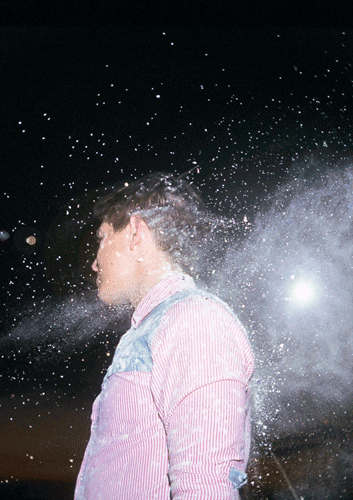 [Stellar Series by Ignacio Torres]
[Stellar Series by Ignacio Torres]
As pioneering thinker Terence McKenna said, “You have to take seriously the notion that understanding the universe is your responsibility, because the only understanding of the universe that will be useful to you is your own understanding.”
But you don’t have to meditate for hundreds of hours to touch this transcendent aspect of self, just block off five-to-ten minutes a day, preferably before you start your day, and go inward. As a thought experiment, open your mind to the grand untapped majesty that might await you, and investigate!
 [Germany series by Aneta Ivanova]
[Germany series by Aneta Ivanova]
What comes up when you focus your attention on connecting with the higher self? I’m not talking about the doubts and fears—push those aside, it’s only a thought experiment. I’m talking about: what colors? What images or words? What feelings?
Here’s an exercise. Think of a time when you felt most yourself, most alive and vibrant. Hone in on that feeling and stoke it like a fire with your attention. Then, see what comes up. The imagination is the language of the subconscious, which is the gateway to the higher self. Play, explore.
It is my experience that the better our relationship with our true selves is, the better we feel and the more we excel at what we do. So it is worth asking what your true self wants. And listening. It has rich gifts to share.
For me, discovering and forging a relationship with my higher self involved many years of trial and error, as well as an intensive year in shamanic psychotherapy, where I worked with a trained guide to re-integrate my fragmented self.
(*To work with this model yourself, check out my post: “Soul Retrieval. “ If you have trouble connecting to your higher aspect, try doing this exercise a few times to clear the psychic debris.)
When I am aligned with the aspect of myself that I would call my true self or higher self, I make self-caring choices. There is a tenderness, a sweetness, a reverence at the heart of everything I do. I am kinder to others, I receive insights and visions and creative ideas…the world opens up.
My day is vastly improved if I give myself just a few minutes in the morning to tune in with my higher aspect and seek its guidance. To start the day out in this manner is a practice of many I have known and respected, and I highly recommend it. People have busy lives—do it in the bathroom if you have to. But connect, feel into this possibility, receive its impressions. There is a wealth of inspiration and insight waiting.
The conditioned mind, the mind society has groomed, has been trained into docile disconnection. The systems of control don’t want you to be empowered. But there are answers and insights waiting beyond the conditioned mind. The higher self holds the key.













